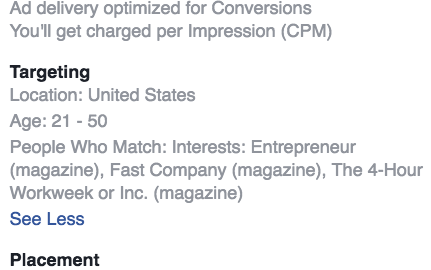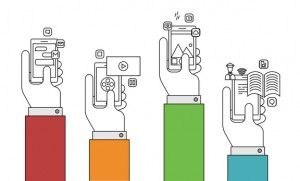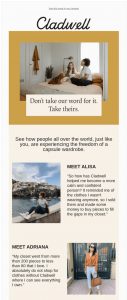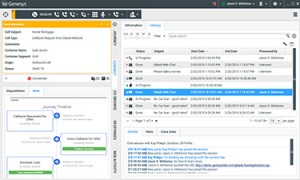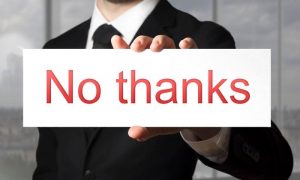The first step to generating new leads is to create a lead magnet.
It’s the bait or lure that’s so interesting, so awesome, and so unique that people can’t help but want it.
Once you’ve hit Publish, it’s easy to assume the hard work is done.
It’s not. You still need to drive consistent traffic.
Getting people to your site in a confident and repeatable way, on a daily basis, can be excruciatingly difficult at first.
Fortunately, there’s one tried-and-true method to create a scalable formula that grows your business (without you personally having to do every last thing).
How to Find Leads for Your Magnet
If you were advertising to generate customers immediately, AdWords is a safe bet.
It’s intent-based, meaning people type in exactly what they’re looking for when comparing alternatives (like, “best car rental companies”).
However, it can also get expensive, as many competitors are going after the same small pool of potential customers.
Advertising to generate immediate sales is a tall order if your product or services are complex and pricey.
That’s where a lead magnet comes into play, helping you nurture a lead until they’re ready to buy. The good news is that you can use less expensive forms of advertising, that are just as effective, like Facebook ad campaigns to promote your new content piece (without killing your budget).
So here’s where to get started.
First, start by using interest-targeting based on whatever topic or problem your lead magnet solves.
Use criteria like location, genders, ages, and devices to whittle down interest groups to a 1-2 million audience size. Also, try targeting groups of people who like similar brands or media publications; which are typically like-minded people who’d find your offer valuable.

As you can tell, audience targeting is fairly broad at this stage in the game. But the goal is to keep an eye on your Cost per Conversions, while continually testing small changes to see which trends are working and should be improved (and which aren’t that need their budgets slashed).
The second group to target are those who might be already visiting your website (or have recently in the past 30-60 days). These people should already be brand-aware, remembering who you are when they see an ad come across their news feed. (The Facebook Pixel Chrome Extension can help you troubleshoot setting this up.)
![]()
The additional benefit with this second group is that there’s no sophisticated audience testing required! If they’ve already been interacting with your brand in the past, they should be a higher quality.
You should use this second group to continually test and alter variations of your ad.
The 3 Step Facebook Ad Formula
Throwing a few words together for a simple text-based AdWords ad is easy.
Whereas coming up with the perfect image, a clever headline and an enticing description for a Facebook ad can seem daunting. The best approach is to simply study the best, like this one from Digital Marketer.

Here’s the formula to follow:
1. Headline: Keep your headline punchy and short. One study found the ideal length to be only five words or less!
Struggling to come up with the perfect headline? Don’t sweat it. Instead, steal borrow directly from your customers.
For example, social maven Laura Roeder used a testimonial-headline from an email subscriber that resulted in a 24.31% conversion rate increase (“Yours is the only newsletter I actually read”).
2. Description: The description is the supporting copy that helps set the context and motivates people to click. Verbs and action words are critical here. Also try to be as specific and relevant as possible (which can give you a 213% increase over more generic, vague copy).

3. Image: The ‘hero image’ got its name by making the viewer the start of the show, helping them imagine what it would be like to experience that.
If possible, try to always use real photos instead of stock ones because people can immediately sense the different (resulting in a 35% conversion increase in another study).
The next best approach is to use visuals that show people exactly what they’re going to get (in a tangible, concrete form — like the Digital Marketer illustration).
Images are probably the most important factor to get right (and test) in a Facebook ad because it only takes us 13 milliseconds to process them.
The good news is that the beautifully designed ads don’t always perform the best. For example, guess which of these two ads converted better:
Exhibit A?

Or Exhibit B?

Surprisingly, the second one which was put together by a marketer (not a designer) ended up outperforming the ‘professional’ one (even though it’s obviously less artistic).
Simple tools like Canva can help you create ad images like this within minutes for a few bucks, as opposed to the lengthy (and expensive) process it takes to work with a designer in some cases.
Conclusion
The best lead magnet in the world is useless without a steady stream of qualified traffic seeing it on a daily basis.
Facebook advertising provides one of the most effective and consistent ways to target people who’ve shown interest in what your offer solves, and those who’ve already visited your website in the recent past.
While it can be daunting at first, the best Facebook ads tend to follow a set pattern or formula. So don’t reinvent the wheel! Simply pick up on how some of the best advertisers are using each component and adapt it for your use.
The best news is that you also don’t have to rely on professional designers to craft a pixel-perfect image. Instead, spend your time iterating a bunch of different designs so that you can quickly identify the winners from the losers.
It’s not always a linear or straightforward process. But with enough work and attention to detail, it’s not an impossible one either.
Business & Finance Articles on Business 2 Community
Author’s Note: This is part two to a two part series on How to Create Your First Lead Magnet. You can read part one of the series here.
(103)
Report Post